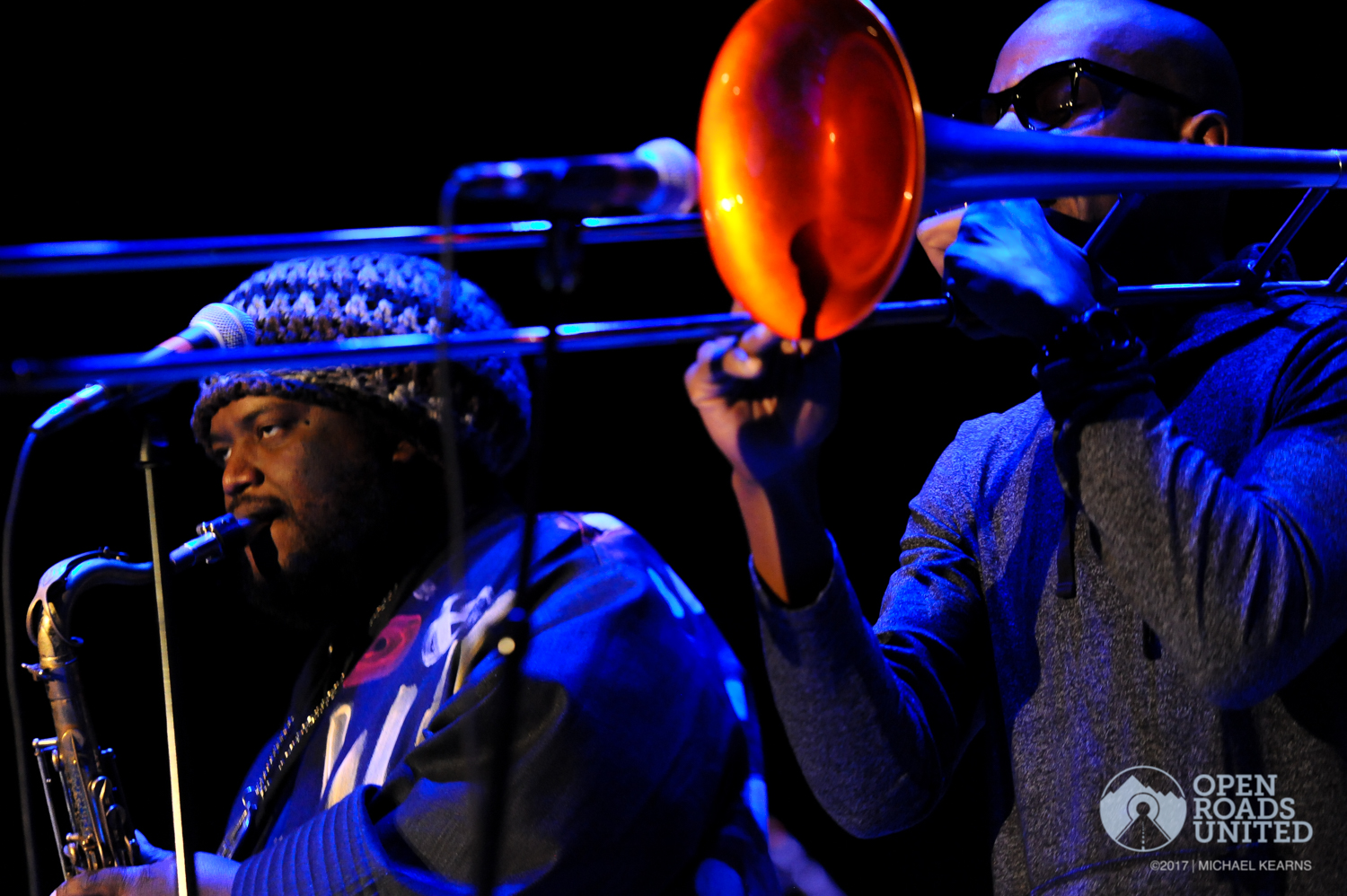There are the facts- which are malleable, false, (as we have been told, ad nauseum, by the truly warped) and there is the essence of a man, of his art- which is truth.
So what to do with Kamasi Washington?
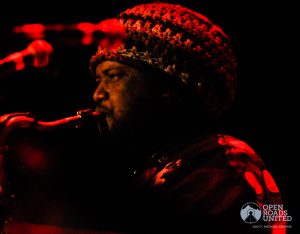 These are the facts: Kamasi Washington (born February 18, 1981) is an American jazz saxophonist, composer, producer, and bandleader. Washington is known mainly for playing tenor saxophone. Now that you have the facts, limited as they are, you now know nothing of the man’s essence. You know nearly nothing about the man, or the music which he creates.
These are the facts: Kamasi Washington (born February 18, 1981) is an American jazz saxophonist, composer, producer, and bandleader. Washington is known mainly for playing tenor saxophone. Now that you have the facts, limited as they are, you now know nothing of the man’s essence. You know nearly nothing about the man, or the music which he creates.
Washington recently said: “Music doesn’t come out of you; it comes through you.”
“You are almost like a messenger. My experience, my life gets woven into the music. I grew up with a sense of music being a very spiritual experience while playing in church and with parents who were socially aware, always teaching me to look beyond the obvious in understanding how the world works.”
Those words place us closer to the truth, but are still a million miles away.
In Zen Koan practice, one attempts to transmit one’s understanding of one’s essence, of one’s place in the universe, to one’s teacher. Often there is a case (koan is roughly translated as case) or question to be answered- Show me your face from before your parents were born; or, What is the sound of one hand clapping?
The answer is normally never a simple, or linear, verbal response. Normally you have a few seconds to answer, and then, when you cannot give a correct answer, there is a polite ring of the bell (from one’s teacher) and you’re shown the door. You return to the mat and are told to spend hours, days, weeks, months or a lifetime on the solution to this koan.
To grossly simplify, one day an answer does come and the student expresses his answer to the teacher, who accepts or rejects the answer. You then move onto the next koan.
So what to make of Kamasi’s performance last week at the Taft?
Did that performance represent an expression of himself?
In the end there’s only one person who knows for certain. I, for one, am happy to take him at face value, to take him at his word.

The truth is that the Kamasi Washington story is at once iconic, shop worn, complex, traditional and innovative. Perhaps the only thing more difficult than divining the depths of your own life is knowing the truth of another man’s soul.
His story is complex because it involves a young black kid who grew up in Englewood, Ca., the son of music teacher; not a kid of [just] the streets, but a kid who is/was unequal parts child of the city and child prodigy- in the sense of Serena WIlliams and Tiger Woods.
As he’s previously stated, he contemplated a life in the hood (“Before jazz, I was sliding towards being a young gangster. I was confused about what I was going to be in life. …I definitely had that negative self-image and aspirations of being “the hardest.” Two things happened. When my cousin gave me that Art Blakey mixtape, all of a sudden I had something that I wanted to do. Then there was a program called Ujima that came to my school. These guys gave us a perspective on our African American history and culture.)”
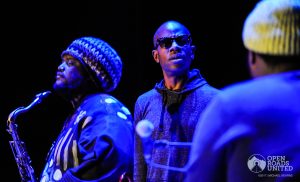
Washington also, however, has had, and clearly capitalized upon, opportunities not open to others . As Washington himself explained in an interview of 9/30/15, “My dad’s teacher, Reggie Andrews, had an all-star band called The Multi-School Jazz Band. He would travel all over the city – picking up kids from South Central who got bussed out to magnet schools around the city, along with some of the kids who were actually from the neighborhoods of said magnet schools – and taking us all back to Locke High School.”
His story is concomitantly traditional also because like many jazz players throughout the 20th century Washington was immersed in, and immersed himself into, the circuit of his day. He serves time with veterans of the established bands of the day where he polishes his craft. Except that given the paucity of jazz players during his youth, he often, for better and worse, served time with bands in other genres.
Again, Washington, “I was practicing a lot and cultivating myself to… I don’t know, we were going to “save jazz.” We were going to take jazz to a new level. Coming out of high school, none of us (except Ron) ended up on a jazz gig. I was like, “If I’m not going to be playing jazz, then I’m going to go play with Snoop Dogg. That’s cool.”
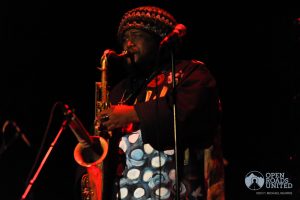
On 5/30/16, Mike Rubin wrote a nice piece in which he quotes Anthony Burr, a musician and professor of contemporary music performance at the University of California-San Diego as saying: “The Pharaoh/Alice Coltrane kind of thing has always been a big part of the sort of canon of rare groove and hip-hop crate-digging,” says Burr, “much more so than it was ever canonical in terms of ‘Jazz’ with a capital J. In a weird way within jazz, it quickly came to seem dated, but the hip-hop guys were often digging pretty explicitly in those areas of jazz which jazz didn’t necessarily want to own, things like this stuff and jazz-funk.”
And so he and the large group of cohorts with whom he plays, give homage not only to the apparent masters (Wayne Shorter and John Coltrane) while also worshipping the church of free jazz, and hip hop and other musical genres just forming and reforming while, all the while,avoiding simple tags. It’s exactly what Trane did- creating sheets of sound and being beaten for that creation.
To try and get a handle on the music of Washington is to take a very long run down some pretty twisted, if not lovely rabbit holes.
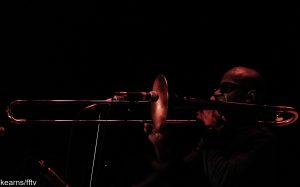 Watch as Rubin tries to trace Washington’s linage, “As a child he was weaned on Coltrane masterpieces like A Love Supreme and Transition by his father Rickey, a horn player who worked as a music teacher. As a teen, Kamasi was chosen to be part of teacher Reggie Andrews’ Multi-School Jazz Band, a sort of all-star squad featuring the best musicians from local public high schools. There he began playing with several of the musicians who would later constitute the West Coast Get Down collective, including bassist Stephen “Thundercat” Bruner, drummer Ronald Bruner, Jr. and trombonist Ryan Porter. Following after-hours jam sessions at the World Stage in Leinert Park he’d catch rides with saxophonist Terrace Martin, who would years later help Washington get a gig touring with Snoop Dogg (as well as bringing him into Lamar’s Butterfly sessions). In December 2011, after two years of woodshedding at a Hollywood cocktail lounge, the musicians pooled their money and booked a month’s worth of studio time, resulting in 192 songs, enough for eight albums, with 45 of them featuring Washington as bandleader. Seventeen of these tunes comprise The Epic; the album appears to have been ready to go for three years, with Washington and Brainfeeder waiting for just the right moment to release it in order to create maximum impact.”
Watch as Rubin tries to trace Washington’s linage, “As a child he was weaned on Coltrane masterpieces like A Love Supreme and Transition by his father Rickey, a horn player who worked as a music teacher. As a teen, Kamasi was chosen to be part of teacher Reggie Andrews’ Multi-School Jazz Band, a sort of all-star squad featuring the best musicians from local public high schools. There he began playing with several of the musicians who would later constitute the West Coast Get Down collective, including bassist Stephen “Thundercat” Bruner, drummer Ronald Bruner, Jr. and trombonist Ryan Porter. Following after-hours jam sessions at the World Stage in Leinert Park he’d catch rides with saxophonist Terrace Martin, who would years later help Washington get a gig touring with Snoop Dogg (as well as bringing him into Lamar’s Butterfly sessions). In December 2011, after two years of woodshedding at a Hollywood cocktail lounge, the musicians pooled their money and booked a month’s worth of studio time, resulting in 192 songs, enough for eight albums, with 45 of them featuring Washington as bandleader. Seventeen of these tunes comprise The Epic; the album appears to have been ready to go for three years, with Washington and Brainfeeder waiting for just the right moment to release it in order to create maximum impact.”
At the end of the day, Washington’s story is the story of jazz, a story broader, deeper and more complex than is ever recognized. It’s a music made of available influences by people determined to tell their story in a fresh new manner- even as people are trying to hang labels on them for their own benefit.
To be an artist and to be exposed to Kamasi, is a wonderful thing. If a kid of 36 is willing to make that many transitions in one short lifetime, if one artist can run that far is so few years, than what excuse do I, does any other artist have, in refusing to follow to emulate, to just give life one’s best shot?
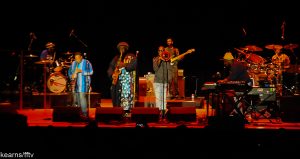
Did last Thursday’s performance represent his best effort to show us, or even himself, his best self, his essence?
I have no idea. Only he knows.
The rest of us are free to search for the facile explanations.
You may look at Kamasi’s most recent band shot/ portrait. It’s a mug shot: a big black man with a huge fro and a hundred yard stare: If you read long enough, one begins to read words like revolutionary and to hear that he is the musical voice of black lives matter. His first tour was with Snoop Dog. You might think: Washington is a badass, is a gangsta.
Yet, given chance to speak a few parting during a recent interview, he states “There are a lot of cool things happening out here on planet Earth. Keep your eyes open. The lights are on now. If we all become more aware, more conscious, the world will be a very amazing place. Let’s all do it. Let’s open up.”
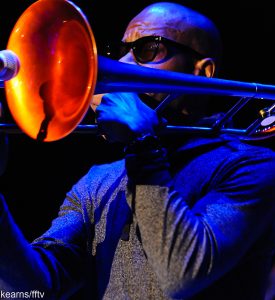 “Diversity shouldn’t be tolerated — it should be celebrated,” Washington also told Tuesday’s crowd at the Taft just prior to introducing “Truth.” In driving the point home, Washington led his eight piece band by playing five melodies concurrently.
“Diversity shouldn’t be tolerated — it should be celebrated,” Washington also told Tuesday’s crowd at the Taft just prior to introducing “Truth.” In driving the point home, Washington led his eight piece band by playing five melodies concurrently.
In the recently released documentary Chasing The Train, John Coltrane is quoted as saying, “I don’t play jazz, I don’t play the blues, I play John Coltrane.” Washington is not the reincarnation of John Coltrane, as so many would have him. Rather he is, thank God, Kamasi Washington: doing his own thing, in his own space, while standing on the shoulder of giants (including Coltrane).
As Mike Breen eloquently wrote, in Citybeat, prior to Washington’s show at the Taft, “The release [Harmony] is further evidence that, while Washington fits perfectly into Jazz’s historical lineage, he also deftly transcends the genre and is bound for legendary status within the broader framework of music as a whole.”
Let’s hope. Let’s hope we get a long time to mull such statements over and over.


